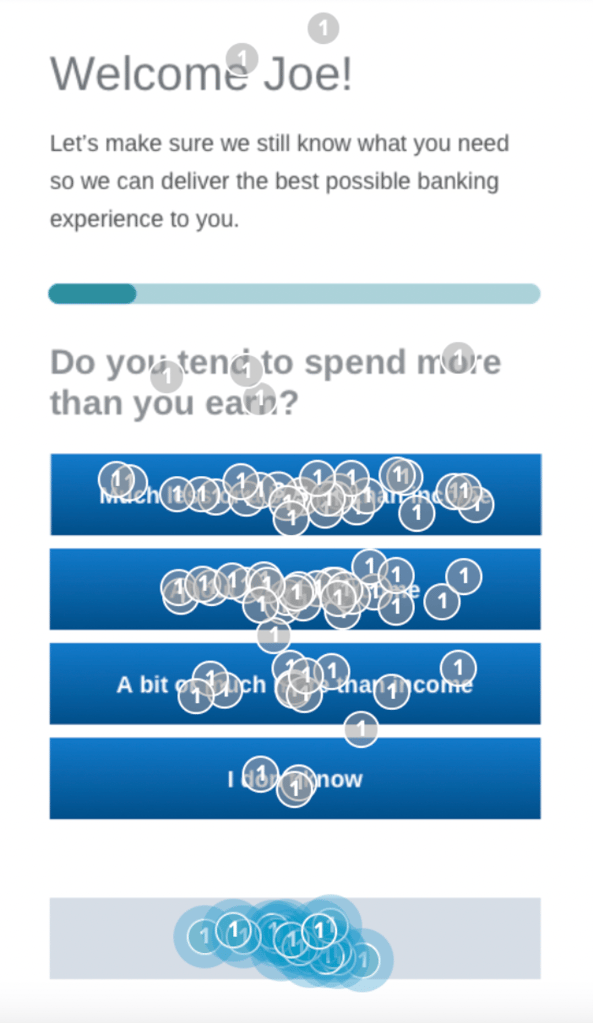Product activation is more than just a step in your onboarding process–it’s a critical component of your SaaS sales funnel that can significantly impact your conversion rates and customer retention. If you’ve ever wondered how to optimize your product activation to maximize its effectiveness, you’re in the right place. In this blog post, we’ll explore the nuances of product activation, common challenges, and actionable strategies to improve your activation rates.
We love Kyle Poyar’s insightful analysis of activation challenges. Activation in SaaS is often misunderstood, leading to common mistakes. He reminds us that activation is a leading indicator, not the ultimate goal. Ensure it translates to outcomes like conversion, revenue, and retention – adjust metrics if it doesn’t.
Kyle offers up solutions to fix these common mistakes:
→ Activation takes too long
→ Expecting overly high activation rates
→ Not linking activation rates to marketing efforts
→ Treating activation as the ultimate goal
→ Using a single activation path for all users
Folks often focus on simplifying onboarding, reducing friction, etc., but can’t crack the code on improving their activation rate. The problem: you shouldn’t have only had one definition of activation.

Understanding Product Activation
Product activation involves verifying that a user has purchased a subscription or license and granting them access to the product’s features. This process not only helps manage licenses but also plays a crucial role in onboarding and user engagement. Successful product activation ensures that users experience the core value of your product quickly, setting the stage for long-term usage and satisfaction.

Dean Oliver’s infographic and article offers a methodology for improving user activation in early-stage startups lacking sufficient user data.
This approach involves six steps: identifying key tasks related to the product’s unique value proposition, hypothesizing the activation point, mapping the user journey, brainstorming potential barriers, ranking these barriers by impact, and developing solutions. Read more about his process: https://lnkd.in/gZh3uUFX
This [aha] moment is different for each product and may not be overtly obvious, particularly without access to an extended period of usage data.
The SaaS Sales Funnel and Product Activation
To optimize product activation, it’s essential to understand its place in the SaaS sales funnel. The sales funnel is a visualization that outlines the journey users take from initial awareness to becoming loyal customers.
Here’s a breakdown of each stage in the funnel using Dean’s example to explain each step:
- Browses Website (100%) The top of the funnel is all about attracting potential users to your website. This stage encompasses various marketing efforts such as SEO, content marketing, social media campaigns, and paid advertising. Everyone who visits your website enters at this point. While attracting 20,000 visitors might seem like a lot, not all will proceed to the next stage. Your website must communicate your product’s value proposition to capture their interest.
- Requests Demo (22%) Once on your website, fewer visitors will show deeper interest by requesting a demo. This stage signifies a user’s intent to explore your product further. Offering an easy-to-access demo request form and clearly outlining the benefits of a demo can help increase this conversion rate. Out of the 20,000 visitors, approximately 4,400 people (22%) might request a demo, highlighting their interest in your solution.
- Signs Up (18%) Signing up is a significant commitment from the user. This stage involves filling out a registration form, providing contact details, and agreeing to use the software. Simplifying the sign-up process and offering incentives, such as a free trial or limited-time offer, can boost conversion rates. In our example, about 3,600 of the initial visitors (18%) will take this step and sign up.
- Becomes Active User (6%) Product activation plays a crucial role in becoming an active user. This stage means that the user has not only signed up but also started using the product. Effective onboarding and seamless activation processes are essential here. Only 1,200 users (6%) out of the original 20,000 visitors might become active users, indicating a significant drop-off that needs to be addressed.
- Long-Term Customer (4%) Finally, the goal is to turn active users into long-term, loyal customers. This stage is achieved through continuous engagement, providing value, and maintaining high levels of customer satisfaction. In our scenario, approximately 800 users (4%) will become long-term customers, contributing to your recurring revenue and overall business growth.
The infographic highlights the drop-off at each stage, emphasizing the importance of each transition. The goal is to minimize these drop-offs by optimizing the product activation process. By understanding where users drop off and why, you can implement targeted strategies to improve conversions at every stage.
For instance, if you notice a significant drop-off between the demo request and sign-up stages, you might need to simplify the sign-up process or offer more compelling incentives. If users are signing up but not becoming active, focus on improving your onboarding and activation processes. Each stage provides valuable insights into user behavior, helping you fine-tune your approach and maximize the effectiveness of your SaaS sales funnel.
Common Product Activation Challenges and How to Solve Them with Helio
Despite its importance, many companies struggle with product activation. Here are some common challenges and how Helio can help solve them:
1. Activation Takes Too Long
Challenge: Lengthy activation processes can frustrate users and lead to drop-offs.
Solution with Helio: Helio helps you streamline the activation process by providing detailed insights into where users encounter friction. You can identify bottlenecks in your activation flow by conducting user tests and collecting real-time feedback.
For instance, testing the onboarding flow for an online banking app revealed what financial questions participants are willing to answer, and which might cause hesitation. One hundred participants from an audience of online banking consumers in the US were shown the onboarding survey presented by the app upon sign up, and then asked to click their way through the survey based on their true answers. The responses were recorded as dots on the mobile design, as seen here:

Participants who decided to skip certain questions in the onboarding survey were temporarily removed from the flow to answer qualitative questions about why they would avoid giving an answer:
“not sure if I feel comfortable filling that out after just signing up”
– Bank Member (US)
With these insights, you can simplify the steps involved, reduce unnecessary complexities, and speed up the overall process, ensuring users activate quickly and smoothly.
2. Expecting Overly High Activation Rates
Challenge: Unrealistic expectations can misguide strategy and priorities.
Solution with Helio: Helio enables you to set realistic activation goals based on data-driven insights. By analyzing user behavior and feedback, you can understand your product’s and industry’s typical activation rates. Helio’s benchmarking tools allow you to compare your activation rates with industry standards, helping you set achievable targets.
To establish realistic expectations for the new wave of consumer AI, we put two competitor conversational UIs to the test: Google’s Bard AI and ChatGPT. We gave directions to one hundred people in the US who are home cooks to interact with the platforms in order to find a recipe for an upcoming themed party.
The testing was conducted through the HEART framework, a method of research that gathers data on the audience’s happiness, engagement, adoption, retention, and task success with the product.

The head-to-head comparison of these two competitor AI platforms revealed that Google’s Bard produces a more helpful and engaging experience when it comes to providing recipe’s to at-home users. Bard AI was especially successful at producing positive impressions, such as innovation and fun, while allowing a greater number of participants to interact with their prompt suggestions rather than finding their own way in the platform.
With a clear understanding of what’s realistic in your market, you can align your strategies and priorities accordingly, focusing on incremental improvements rather than unattainable goals.
View the Helio HEART Framework
3. Not Linking Activation Rates to Marketing Efforts
Challenge: Misalignment can lead to ineffective campaigns.
Solution with Helio: Helio bridges the gap between marketing and product teams by providing comprehensive data on how marketing efforts impact activation rates. You can run targeted tests to see which marketing messages and channels drive the highest activation rates.
For example, we gathered early conceptual feedback on messaging variations for a new hard lemonade brand. We ran the testing as if the brand, Lemon Squeezers, needed to establish direction for the marketing messaging to attract consumers in an already oversaturated market.
Two hundred participants from an audience of alcohol consumers in the US were shown a list of potential mottos that they might see for a new alcoholic brand. Lemon Squeezers key goal is to stand out as a joyful and fun brand in the market, so they asked participants to rank the list in order of their funniness:

This rank order testing revealed that the brand’s more ‘punny’ messaging seemed to fall to the bottom of the list, such as ‘e-lemon-ate’ or ‘elemont’. Contrary to the team’s prediction, the most straightforward motto that doesn’t attempt to make puns or be extra funny, received the most engagement from the audience.
“I liked the “life is hard…” slogan best. For the rest, any references to “tart”, “zest” or “lemon” were good, but not in my mind as good as #1.”
– Alcohol Consumer (US)
This alignment ensures that your marketing campaigns effectively drive users toward activation, allowing for better resource allocation and more successful outcomes.
4. Treating Activation as the Ultimate Goal
Challenge: Activation is just a step towards engagement and retention.
Solution with Helio: Helio helps you understand that activation is not the end goal but a step towards deeper user engagement and retention. By continuously gathering user feedback and behavior data, Helio provides insights into how users interact with your product post-activation.
To gain a holistic understanding of how your product is performing after activation, Helio’s gravity score reveals the perceived user experience of hundreds of participants at once. Developed from the System Usability Score (SUS), Helio’s Gravity Score produces a single metric to determine the overall success of your user experience, based on data collected from a 10-question survey.
We used this method on a mock-up of an ad management platform we call Advent, to measure the user experience of four key pages in the product across three rounds of iteration.

The Gravity Score testing revealed that Advent’s campaign creation, audience, and map pages had reached average or above average levels of usability by the second or third round of iteration. However, the most dense part of the platform, the Analytics page, predictably had more difficulty. By the third round of iteration, we were not able to bring the gravity score up to average levels, showing the need for a further round of iteration on this page.
This ongoing analysis helps you identify opportunities to enhance user engagement, improve feature adoption, and ultimately retain customers. With Helio, you can develop a comprehensive strategy that moves users beyond activation, ensuring they experience long-term value from your product.
5. Using a Single Activation Path for All Users
Challenge: Different users may require different paths to activation.
Solution with Helio: Helio allows you to create personalized activation paths for different user segments. By segmenting users based on their behavior, needs, and preferences, you can design tailored activation experiences that resonate with each group. Helio’s testing capabilities enable you to experiment with various activation flows, determining which paths are most effective for different segments.
We did this for a mock-up of a skincare brand called SkinSavvy to determine what type of platform their audience of beauty product consumers are most likely to engage with given certain scenarios. Each scenario was presented to 100 consumers, and then a multiple choice question presented to determine which platform they would interact through to achieve their goal: app, website, text message, or social media. The results of each scenario are logged in the data framework below to reveal which platform saw most engagement:

The highlighted blue boxes showing the most likely choice in each scenario quickly reveals that text messaging and social media are very unlikely platforms for engagement with booking actions.
This personalized approach ensures that each user receives a relevant and engaging activation experience, increasing the likelihood of successful activation across diverse user groups.
View the Helio Journey Map Case Study
Recommendations
Product activation is a critical step in the SaaS sales funnel, and addressing common challenges is key to optimizing this process. Helio offers powerful tools and insights that help you streamline activation, set realistic goals, align marketing efforts, focus on long-term engagement, and personalize activation paths.
The data collected through Helio often leads to clear recommendations on where to go next with your product, such as:
Banko should save their more personal financial questions in the onboarding until the end to not dissuade users from completion with early question ‘skips’.
ChatGPT should provide more broad/categorical prompt suggestions in their recommended commands to increase engagement and encourage more interaction.
Lemon Squeezers should move forward with the motto ‘Life is Hard, Our Lemonade is Harder’, and avoid slogans that lean too heavily on complex puns, like ‘e-lemon-ate’.
Advent should focus their iteration efforts on their Analytics page, as the dashboard and audiences pages saw an increase in user experience through the gravity score, and Analytics is still below the expected average.
SkinSavvy’s action map revealed that their website should be the most preferred platform for their audience to engage in scenarios across Prep, Learn, and Book activities.
By leveraging Helio, you can enhance your product activation strategy, reduce drop-offs, and ultimately drive better outcomes for your business as these companies did.
Resources
Product Activation Resources
Here are links to improving SaaS activation rates through proven strategies, practical steps, and insightful tips. Topics include building activation funnels, increasing lead activation, solving activation issues, and enhancing adoption. Sources include blog posts by Natalie Marcotullio, Jane Portman, Alexander Estner, and Michal Mazurek, and videos by Dan Martell and TK Kader.
-
5 Proven Ways to Improve Activation Rate for SaaS
, by
Natalie Marcotullio
-
How To Increase Activation & Adoption Of Your SaaS Product (video)
, by
Dan Martell
-
How to Create an Activation Funnel to Grow Your SaaS
, by
Jane Portman
-
13 powerful tips on activating more leads (B2B SaaS Activation)
, by
Alexander Estner
-
Improving SaaS Activation Rates
, by
Michal Mazurek
-
SaaS Business Model (EP5: Activation Problems & Tightening our Core Loop)
, by
TK Kader
Best Practices for Product Activation
Optimizing product activation is crucial for improving user engagement and retention. Implementing best practices can streamline the activation process and ensure a smoother user experience. Here are some detailed best practices to consider:
Personalize the Activation Process
Tailoring the activation experience to individual users based on their needs and behaviors can significantly enhance user engagement. Imagine you are a first-time user exploring a new SaaS product. Your initial interactions shape your perception and determine whether you’ll stick around. By segmenting users based on their demographics, behaviors, or usage patterns, you can offer a personalized experience that feels relevant and engaging.
For instance, new users might benefit from a guided tour that walks them through the key features step-by-step, while experienced users might prefer to dive right in with advanced tutorials or tips tailored to their expertise. Dynamic content can enhance this experience by displaying personalized messages, tutorials, and tips based on user actions and preferences. Continuously gathering user feedback allows you to refine and enhance their personalized experience, making them feel valued and understood.
Simplify Onboarding
A complicated onboarding process can lead to user frustration and drop-offs. Simplifying onboarding ensures users can quickly understand and engage with your product. Picture this: you’ve just signed up for a new tool, but the sign-up form asks for overwhelming information, and the subsequent steps are convoluted and unclear. Frustrating, right?
Streamlining the sign-up process by minimizing the required fields and steps can make a huge difference. Clear, concise instructions and guidance throughout onboarding help users feel confident and supported. Interactive tutorials that walk users through key features and functionalities can make learning engaging and intuitive. Progress indicators showing users how far they are in the onboarding process and what steps remain can also reduce anxiety and increase motivation to complete the onboarding.
Use Data-Driven Insights
Regularly analyzing user data to identify pain points and opportunities for improvement is essential for optimizing product activation. Data-driven decision-making allows you to uncover insights and make informed improvements. For instance, behavioral analytics can help you track user interactions and behaviors, revealing where users encounter issues or drop off.
Collecting user feedback through surveys, interviews, and in-app feedback tools provides a deeper understanding of user experiences and challenges. Conducting A/B tests to compare different activation strategies can help determine what works best, while monitoring key metrics such as activation rates, time to activation, and user engagement can assess the effectiveness of your activation process. By leveraging these insights, you can make targeted improvements that enhance the user experience and increase activation rates.
Continuously Test and Iterate
Continuous improvement is key to maintaining an effective activation process. Regular testing and iteration help you stay responsive to user needs. Imagine running a series of small experiments to test new ideas and features, then using the insights gained to make iterative improvements. This approach allows you to refine the activation process based on real-world feedback and validation.
Involving users in the testing process can provide valuable insights and ensure that changes are aligned with user needs and preferences. Keeping detailed records of tests, feedback, and changes helps track progress and learn from past experiences. This ongoing cycle of testing, feedback, and iteration ensures that your activation process remains effective and responsive to evolving user needs.
Ensure Alignment
Alignment between marketing and product teams is crucial for a seamless user experience. Imagine both teams working together with unified goals and a shared understanding of success. Establishing common goals and KPIs ensures that both teams work towards the same objectives.
Ensuring marketing messages align with user experience and product capabilities creates a consistent and trustworthy user journey. Collaborative planning involving both teams fosters a holistic approach to activation while regularly sharing insights and data to keep everyone informed and aligned. This collaboration ensures that the activation strategy is cohesive and effective, ultimately driving better results for your business.
Product Activation Practices
Implementing these best practices can significantly enhance your product activation process, increasing user engagement and retention. Personalizing the activation experience, simplifying onboarding, using data-driven insights, continuously testing and iterating, and ensuring alignment between teams can create a seamless and effective activation journey for your users. The goal is to make activation as smooth and engaging as possible, ensuring users quickly realize the value of your product and are motivated to continue using it. By focusing on these areas, you can drive better outcomes for your business and foster long-term user loyalty.
Product activation is a crucial step in converting prospects into loyal customers. By understanding its role in the SaaS sales funnel, addressing common challenges, and implementing best practices, you can optimize your product activation process and drive better outcomes. Remember, the goal is to ensure users experience the core value of your product quickly and easily.
Product Activation FAQ
Product activation involves verifying that a user has purchased a legitimate copy of your software, granting them access to the product’s features. This process is crucial for managing licenses and ensuring users can fully utilize the product. Successful product activation sets the stage for long-term usage and satisfaction by helping users quickly experience the core value of your product, thereby improving conversion rates and customer retention.
Streamlining the product activation process involves simplifying users’ steps to activate your product. This can be achieved by reducing unnecessary complexities, providing clear and concise instructions, and using tools like Helio to identify and eliminate bottlenecks. Regularly testing and iterating on the activation process based on user feedback can also help ensure it remains efficient and user-friendly.
Common challenges in product activation include lengthy activation processes, unrealistic activation rate expectations, not linking activation rates to marketing efforts, treating activation as the ultimate goal, and using a single activation path for all users. Addressing these challenges involves setting realistic goals, aligning marketing and product strategies, and personalizing the activation process for different user segments.
Personalization improves product activation by tailoring the experience to individual users based on their needs and behaviors. This can involve creating custom onboarding paths for different user segments, using dynamic content to show personalized messages and tips, and continuously gathering user feedback to refine and enhance the activation process. Personalization helps users feel more engaged and supported, increasing the likelihood of successful activation.
Linking activation rates to marketing efforts ensures that marketing campaigns effectively drive users toward activation. By understanding which marketing messages and channels are most effective, you can allocate resources more efficiently and improve campaign outcomes. Tools like Helio can provide comprehensive data on how marketing efforts impact activation rates, helping you optimize your strategies.
Continuous testing and iteration are crucial for maintaining an effective activation process. By regularly testing new ideas and features and using the insights gained to make iterative improvements, you can stay responsive to user needs. Involving users in the testing process provides valuable feedback, ensuring changes are aligned with user preferences and enhancing the overall activation experience.





